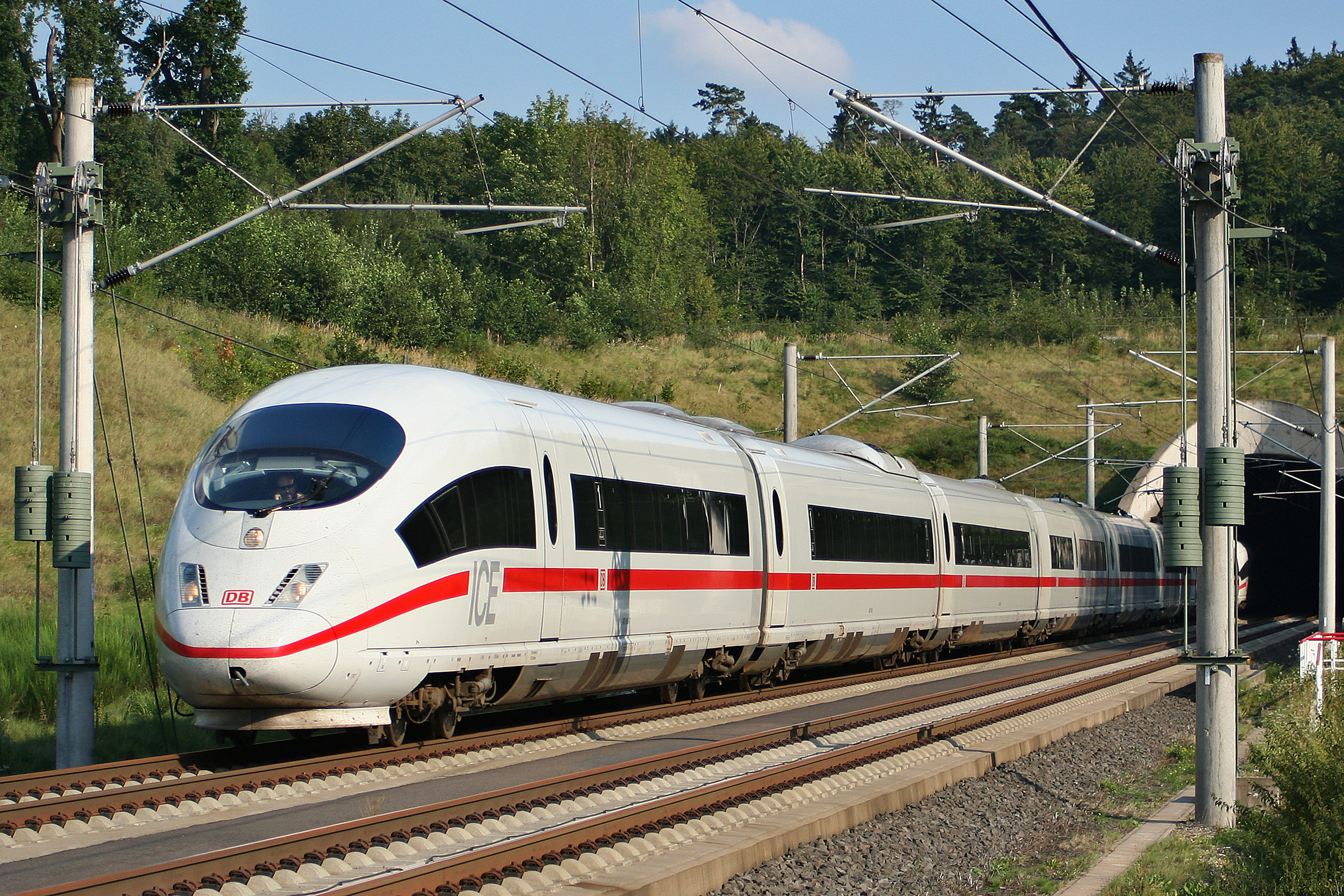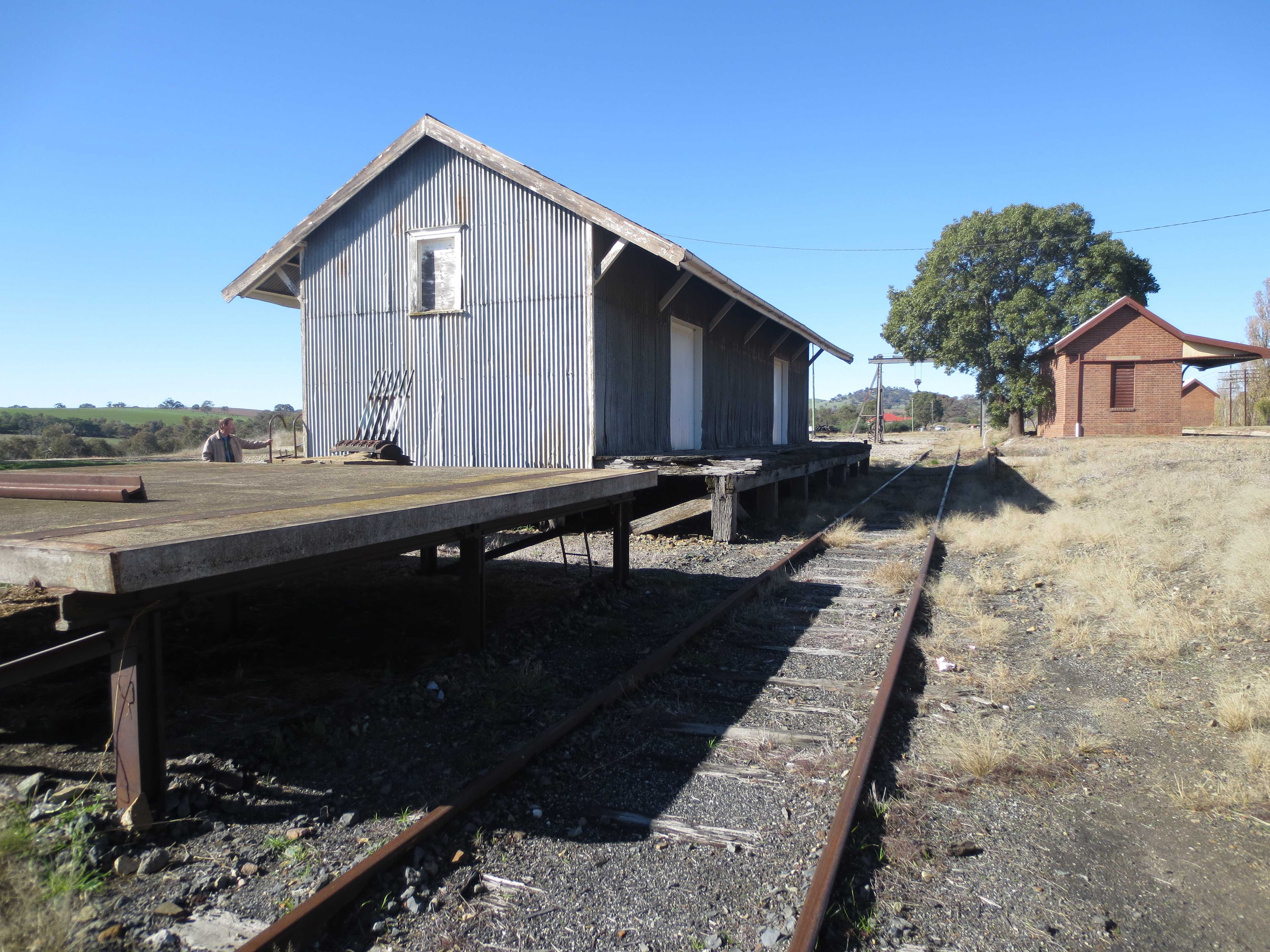|
Lamezia Terme Centrale Railway Station
Lamezia Terme Centrale railway station ( it, Stazione di Lamezia Terme Centrale) is the main railway station serving the city and ''comune'' of Lamezia Terme, in the Calabria region, Southern Italy. Opened in 1894, it forms part of the Battipaglia–Reggio di Calabria railway, and is also a terminus of a secondary line, the Lamezia Terme–Catanzaro Lido railway. The station is currently managed by Rete Ferroviaria Italiana (RFI). Train services are operated by or on behalf of Trenitalia. Each of these companies is a subsidiary of Ferrovie dello Stato (FS), Italy's state-owned rail company. Location Lamezia Terme Centrale railway station is situated at via del Mare, at the northeastern edge of the city centre. History The station was opened on 15 November 1894, under its original name ''Sant'Eufemia Biforcazione'', together with the rest of the section of the Battipaglia–Reggio di Calabria railway between Pizzo and Gizzeria Lido (the latter then known as ''Sant'Eufemia Mar ... [...More Info...] [...Related Items...] OR: [Wikipedia] [Google] [Baidu] |
Lamezia Terme
Lamezia Terme (), commonly called Lamezia, is an Italian city and ''comune'' of 70,452 inhabitants (2013), in the province of Catanzaro in the Calabria region. Geography Lamezia is located on the eastern border of the coastal plain commonly called Piana di Sant'Eufemia, which was created by drying a wide marshy area. The municipality borders with Conflenti, Curinga, Falerna, Feroleto Antico, Gizzeria, Maida, Calabria, Maida, Martirano Lombardo, Nocera Terinese, Platania, San Pietro a Maida and Serrastretta. History The municipality of Lamezia Terme was formally created on 4 January 1968. Its territory includes those of the former municipalities of Nicastro, Sambiase and Sant'Eufemia Lamezia. Nicastro Nicastro's origins trace back to the 9th century, when Calabria was part of the Byzantine Empire, when a fortress called ''Neo Castrum'' ("New Castle") was created. A great Benedictine abbey, St. Eufemia, was founded here in 1062 by the Normans, Norman count Robert Guiscard. It ... [...More Info...] [...Related Items...] OR: [Wikipedia] [Google] [Baidu] |
Paola Railway Station
Paola railway station ( it, Stazione di Paola) serves the town and ''comune'' of Paola, in the Calabria region, southern Italy. Opened in 1895, it forms part of the Battipaglia–Reggio di Calabria railway, and is also a terminus of a secondary line, the Paola–Cosenza railway. The station is currently managed by Rete Ferroviaria Italiana (RFI). Train services are operated by or on behalf of Trenitalia. Each of these companies is a subsidiary of Ferrovie dello Stato (FS), Italy's state-owned rail company. Location Paola railway station is situated in Viale Stazione, at the western edge of the city centre, near the waterfront. History The station was opened on 15 November 1894, together with the rest of the final section of the Battipaglia–Reggio di Calabria railway was completed, between Praja-Ajeta-Tortora and Gizzeria Lido (then known as ''Sant'Eufemia Marina''), via Scalea, Cetraro, Paola and Amantea. Management of the station and the line was initially entrusted ... [...More Info...] [...Related Items...] OR: [Wikipedia] [Google] [Baidu] |
Railway Stations In Calabria
Rail transport (also known as train transport) is a means of transport that transfers passengers and goods on wheeled vehicles running on rails, which are incorporated in tracks. In contrast to road transport, where the vehicles run on a prepared flat surface, rail vehicles (rolling stock) are directionally guided by the tracks on which they run. Tracks usually consist of steel rails, installed on sleepers (ties) set in ballast, on which the rolling stock, usually fitted with metal wheels, moves. Other variations are also possible, such as "slab track", in which the rails are fastened to a concrete foundation resting on a prepared subsurface. Rolling stock in a rail transport system generally encounters lower frictional resistance than rubber-tyred road vehicles, so passenger and freight cars (carriages and wagons) can be coupled into longer trains. The operation is carried out by a railway company, providing transport between train stations or freight customer facil ... [...More Info...] [...Related Items...] OR: [Wikipedia] [Google] [Baidu] |
Rail Transport In Italy
The Italian railway system is one of the most important parts of the infrastructure of Italy, with a total length of of which active lines are 16,723 km. The network has recently grown with the construction of the new high-speed rail network. Italy is a member of the International Union of Railways (UIC). The UIC Country Code for Italy is 83. The network '' RFI'' (''Rete Ferroviaria Italiana'', Italian Rail Network), a state owned infrastructure manager which administers most of the Italian rail infrastructure. The total length of ''RFI'' active lines is , of which are double tracks. Lines are divided into 3 categories: *''fundamental lines'' (''fondamentali''), which have high traffic and good infrastructure quality, comprise all the main lines between major cities throughout the country. Fundamental lines are long; *''complementary lines'' (''complementari''), which have less traffic and are responsible for connecting medium or small regional centers. Most of these ... [...More Info...] [...Related Items...] OR: [Wikipedia] [Google] [Baidu] |
List Of Railway Stations In Calabria
This is the list of the railway stations in Calabria owned by Rete Ferroviaria Italiana, a branch of the Italian state company Ferrovie dello Stato. List See also *Railway stations in Italy *Ferrovie dello Stato *Rail transport in Italy *High-speed rail in Italy *Transport in Italy Italy has a well developed transport infrastructure. The Italian rail network is extensive, especially in the north, and it includes a high-speed rail network that joins the major cities of Italy from Naples through northern cities such as Mila ... References External links {{Italian railway stations Cal ... [...More Info...] [...Related Items...] OR: [Wikipedia] [Google] [Baidu] |
History Of Rail Transport In Italy
History (derived ) is the systematic study and the documentation of the human activity. The time period of event before the invention of writing systems is considered prehistory. "History" is an umbrella term comprising past events as well as the memory, discovery, collection, organization, presentation, and interpretation of these events. Historians seek knowledge of the past using historical sources such as written documents, oral accounts, art and material artifacts, and ecological markers. History is not complete and still has debatable mysteries. History is also an academic discipline which uses narrative to describe, examine, question, and analyze past events, and investigate their patterns of cause and effect. Historians often debate which narrative best explains an event, as well as the significance of different causes and effects. Historians also debate the nature of history as an end in itself, as well as its usefulness to give perspective on the problems of the p ... [...More Info...] [...Related Items...] OR: [Wikipedia] [Google] [Baidu] |
Multiple Unit
A multiple-unit train or simply multiple unit (MU) is a self-propelled train composed of one or more carriages joined together, which when coupled to another multiple unit can be controlled by a single driver, with multiple-unit train control. Although multiple units consist of several carriages, single self-propelled carriages – also called railcars, rail motor coaches or railbuses – are in fact multiple-units when two or more of them are working connected through multiple-unit train control (regardless if passengers can walk between the units or not). History Multiple-unit train control was first used in electric multiple units in the 1890s. The Liverpool Overhead Railway opened in 1893 with two-car electric multiple units, controllers in cabs at both ends directly controlling the traction current to motors on both cars. The multiple-unit traction control system was developed by Frank Sprague and first applied and tested on the South Side Elevated Railroad (now p ... [...More Info...] [...Related Items...] OR: [Wikipedia] [Google] [Baidu] |
ETR 480
The ETR 480 is a tilting Electric Multiple Unit built by Fiat Ferroviaria (now Alstom Ferroviaria) since 1993, It is also known as Pendolino. It was developed from the first new-generation Pendolino, the ETR 460. The main difference between ETR 460, ETR 470 and ETR 480 is that the 460 run only on 3 kV DC, the 470 on both 3 kV DC and 15 kV AC, and the 480 on both 3 kV DC and . FS Class 485 The ETR 480 was originally built without real 25 kV AC electrical equipment. This equipment is now installed on all the sets and the trains that have been converted are then re-measured on ETR 485. Export One of these units has been sent for testing on the Greek railway (TrainOSE), on the high speed line between Thessaloniki and Katerini. In August 2018, the specified number of 485,031 was transferred from Italy to Greece for test routes. This was the beginning for converting some ETR 470 for use by TrainOSE. Technical information *max. speed (in service): *traction system: = 3 kV DC, ... [...More Info...] [...Related Items...] OR: [Wikipedia] [Google] [Baidu] |
Roma Termini Railway Station
Roma Termini (in Italian, ''Stazione Termini'') is the main railway station of Rome, Italy. It is named after the district of the same name, which in turn took its name from ancient Baths of Diocletian (in Latin, ''thermae''), which lie across the street from the main entrance. Overview The station has regular train services to all major Italian cities, as well as daily international services to Munich, Geneva, and Vienna. With 33 platforms and over 180 million passengers each year, Roma Termini is the second largest railway station in Europe after Paris Gare du Nord. Termini is also the main hub for public transport inside Rome. Two Rome Metro lines (A and B) intersect at Termini metro station, and a major bus station is located at Piazza dei Cinquecento, the square in front of the station. However, the main tram lines of the city cross at Porta Maggiore, some 1,500 metres east of the station. On 23 December 2006, the station was dedicated to Pope John ... [...More Info...] [...Related Items...] OR: [Wikipedia] [Google] [Baidu] |
Goods Yard
A goods station (also known as a goods yard or goods depot) or freight station is, in the widest sense, a railway station where, either exclusively or predominantly, goods (or freight), such as merchandise, parcels, and manufactured items, are loaded onto or unloaded off of ships or road vehicles and/or where goods wagons are transferred to local sidings. A station where goods are not specifically received or dispatched, but simply transferred on their way to their destination between the railway and another means of transport, such as ships or lorries, may be referred to as a transshipment station. This often takes the form of a container terminal and may also be known as a container station. Goods stations were more widespread in the days when the railways were common carriers and were often converted from former passenger stations whose traffic had moved elsewhere. First goods station The world's first dedicated goods terminal was the 1830 Park Lane Goods Station at the ... [...More Info...] [...Related Items...] OR: [Wikipedia] [Google] [Baidu] |
Pedestrian Underpass
A subway, also known as an underpass, is a grade-separated pedestrian crossing which crosses underneath a road or railway in order to entirely separate pedestrians and cyclists from motor traffic or trains respectively. Terminology In the United States, as used by the California Department of Transportation and in parts of Pennsylvania such as Harrisburg, Duncannon and Wyoming County, subway refers to a depressed road undercrossing. Where they are built elsewhere in the country, the term 'pedestrian underpass' is more likely to be used, because "subway" in North America refers to rapid transit systems such as the New York City Subway or the Toronto Subway. This usage also occurs in Scotland, where the underground railway in Glasgow is referred to as the Glasgow Subway. Effects Pedestrian underpasses allow for the uninterrupted flow of both pedestrians and vehicle traffic. However, they are normally considered a last resort by modern urban planners as they can be expensive a ... [...More Info...] [...Related Items...] OR: [Wikipedia] [Google] [Baidu] |
.jpg)

.jpg)


.jpg)